In the world of performance road cycling, every detail matters—from the frame geometry to the choice of components. Among these details, the cockpit plays a pivotal role in connecting the rider to the bike. The shift from traditional separate stems and handlebars to integrated designs like the Trifox Ultra Light Integrated Carbon Drop Handlebar with Stem (DHB600) represents more than just an aesthetic improvement. It embodies a holistic approach to performance optimization, combining aerodynamics, weight reduction, and structural efficiency into one elegant package.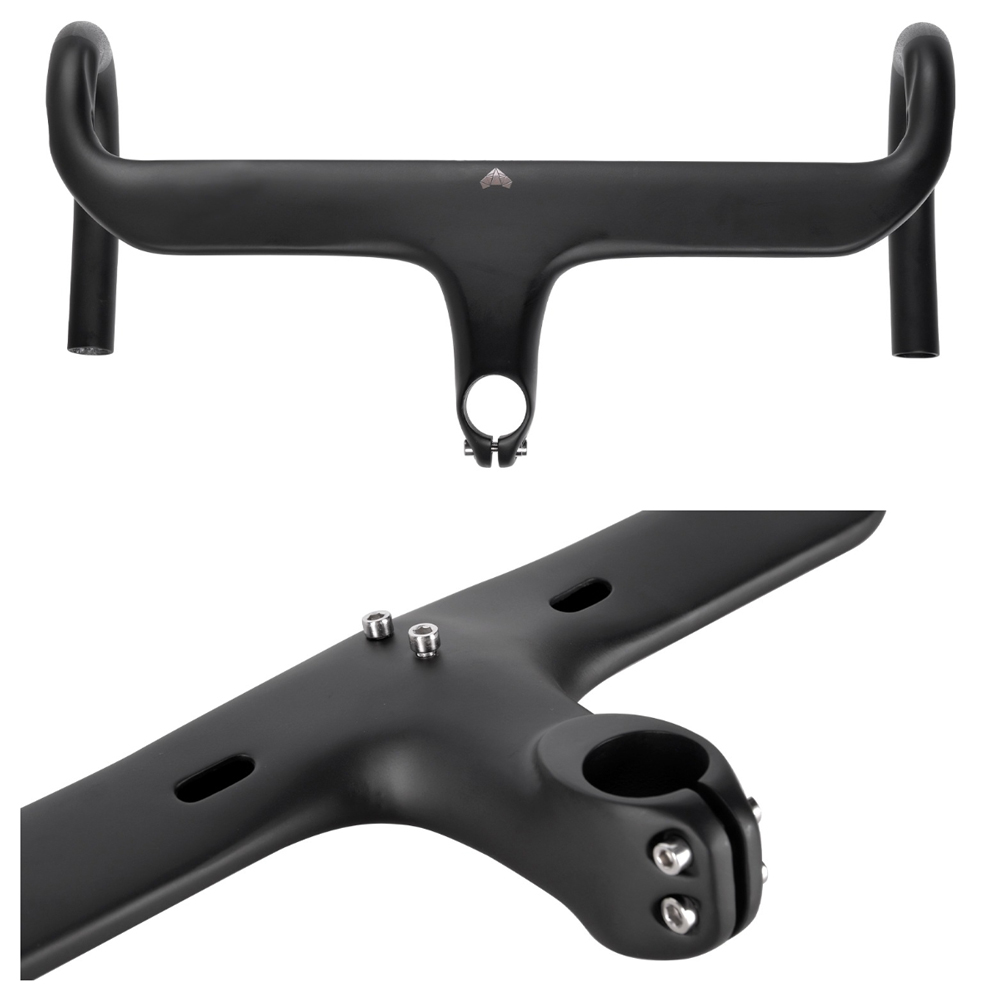
The Aerodynamic Advantage: Slicing Through the Air
When riding at speed, aerodynamic drag becomes the primary resistance force. Traditional setups with separate components create multiple edges, gaps, and exposed cables that disrupt airflow. An integrated carbon handlebar like the DHB600 eliminates these turbulent zones by creating a seamless transition from the steerer tube to the bar itself. The clean front profile of such carbon fiber road bike handlebars allows air to flow smoothly over the cockpit area, making it particularly valuable for drop bar road bike enthusiasts who spend significant time in the aerodynamic drops position.
Weight Reduction: The Unseen Performance Boost
Carbon fiber's exceptional strength-to-weight ratio makes it ideal for performance components. The DHB600's integrated design takes this further by eliminating redundant materials found in traditional two-piece setups. For riders seeking every possible advantage, this weight reduction at the front end makes the bike feel more responsive during accelerations and climbs. The psychological and physical benefit of a lightweight road cockpit enhances the overall riding experience significantly.
Stiffness and Power Transfer: The Direct Connection
Performance road cycling demands efficient power transfer from rider to bike. Traditional handlebar-stem interfaces can introduce compliance that absorbs some of this energy. Integrated carbon fiber bicycle handlebars create a monocoque structure that eliminates this potential energy loss point. The unified carbon construction of the DHB600 ensures that every watt you produce reaches the front wheel with minimal dissipation, providing confidence during sprints and out-of-the-saddle climbing efforts.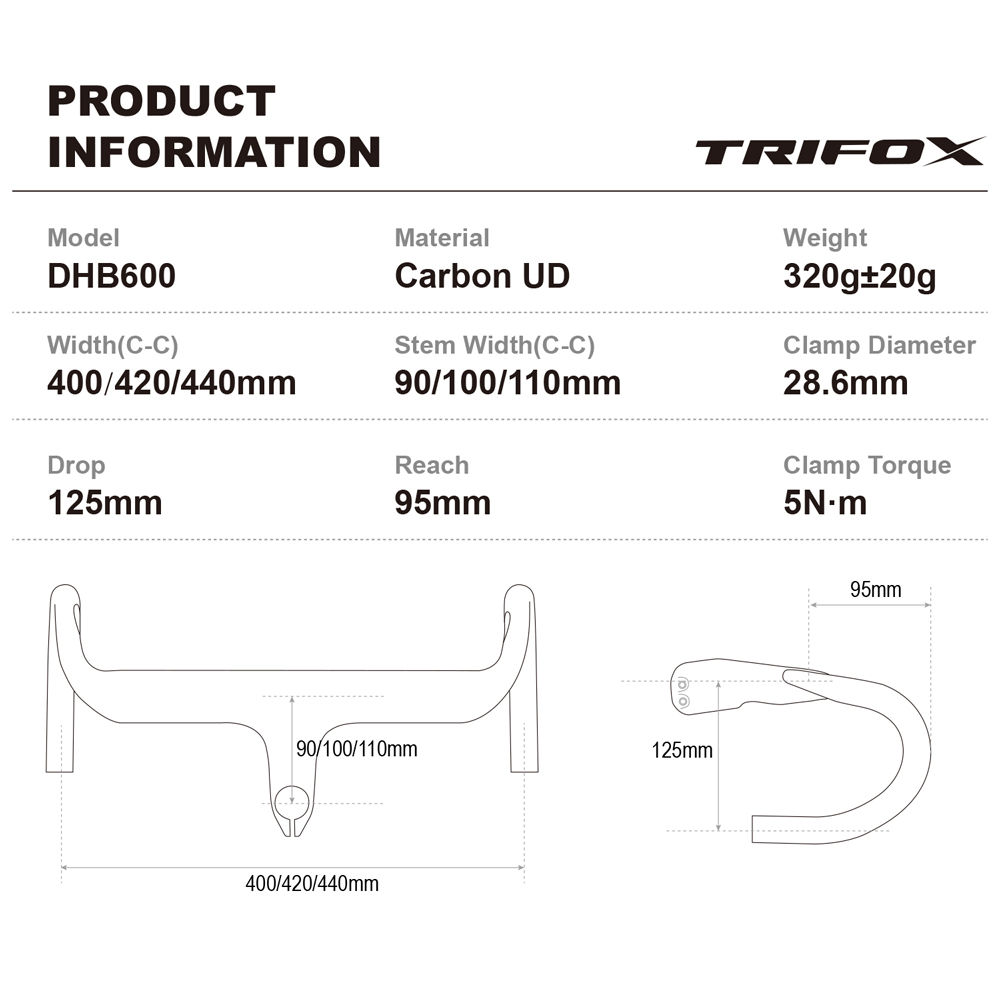
Cable Integration: Form Meets Function
Beyond aerodynamics, the internal routing capabilities of modern road bike drop handlebars offer practical performance benefits. The DHB600's design allows for complete cable concealment, protecting vital brake and shifting lines from the elements while reducing maintenance needs. This clean approach eliminates cable slap against the frame and reduces drag caused by exposed housing, ensuring consistent performance regardless of weather conditions.
Ergonomic Precision: Tailored Fit and Comfort
Unlike traditional setups that often force compromises between stem length and handlebar reach, integrated drop bars for road bike designs offer more precise fit customization. The DHB600 is available in multiple configurations that maintain optimal ergonomic relationships between the contact points. Proper positioning reduces fatigue on long rides and prevents discomfort that can detract from performance, with clean bend transitions enhancing comfort in all hand positions.
The Future of Performance Cockpits
As road cycling technology continues to evolve, the trend toward integration shows no signs of slowing. The performance benefits demonstrated by components like the Trifox DHB600—aerodynamic efficiency, weight reduction, improved stiffness, and clean aesthetics—represent where road cycling component design is heading. For serious cyclists looking to optimize every aspect of their ride, upgrading to an integrated carbon fiber handlebars system offers tangible benefits that go beyond mere appearance.
The Trifox DHB600 exemplifies how thoughtful integration can enhance multiple aspects of the riding experience simultaneously, proving that in the quest for performance, clean design truly does win. Whether you're building a new performance machine or upgrading an existing road bike, these integrated solutions offer a path to cleaner aesthetics and better performance.
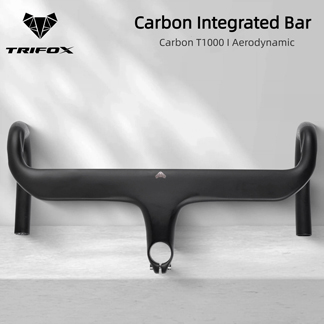
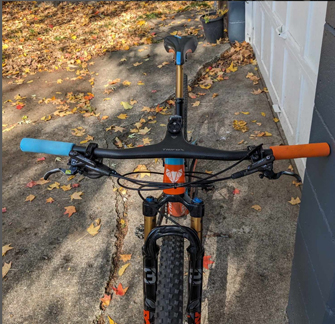
In the quest for a cleaner cockpit and enhanced performance, integrated handlebars have become the upgrade of choice for discerning mountain bikers. Trifox offers two excellent options in this category: the RHB200 and RHB600. Both are carbon fiber integrated MTB handlebars designed to improve your bike's front end, but they feature key differences that cater to varying preferences and needs. Understanding these distinctions will help you select the perfect cockpit upgrade for your trail adventures.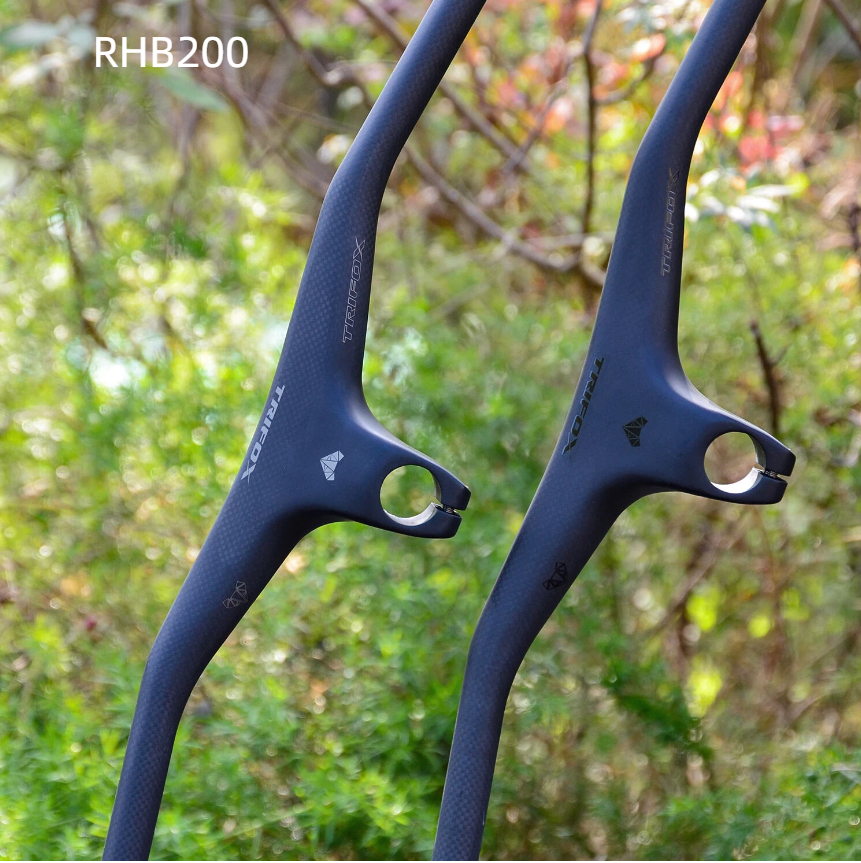
Design & Construction: Carbon Excellence for Mountain Biking
Both the Trifox RHB200 and RHB600 utilize high-quality carbon fiber construction, offering the ideal balance of lightweight performance and trail-ready durability. As carbon mtb handlebars, they provide superior vibration damping compared to aluminum alternatives, reducing hand fatigue on long rides while maintaining the stiffness needed for precise control in technical sections.
Geometry & Fit: Tailored for Trail Performance
Both handlebars are designed specifically as mountain bike riser handlebars with ergonomic geometries optimized for off-road riding. They feature moderate rise (typically 20-35mm) and backsweep (8-9 degrees) that position your hands naturally for control and comfort during long trail sessions. Both models represent excellent choices for riders seeking responsive mtb bicycle handlebars.
Cable Management: The Defining Difference
This is where the two models diverge most significantly, representing different approaches to cockpit cleanliness and maintenance accessibility.
The RHB200 Carbon Integrated MTB Handlebar utilizes a semi-integrated routing approach. While it features clean entry and exit points for cables, some cable housing may remain partially visible along the bar and stem interface. This design offers easier installation and maintenance while still providing a cleaner look than traditional separate components.
The RHB600 Carbon Integrated Full Internal MTB Handlebar represents the pinnacle of cockpit integration. All brake lines, derailleur cables, and dropper post housings route completely internally through the bar and stem structure. This full internal routing creates an exceptionally clean appearance while protecting cables from trail debris and weather elements. This makes the RHB600 a superior choice for those seeking the ultimate in internal cable routing solutions.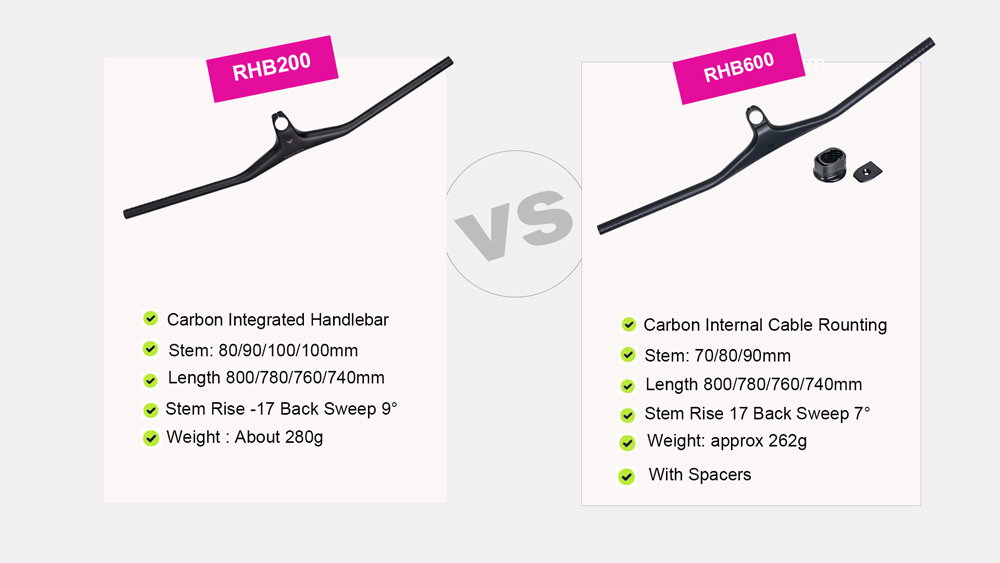
Weight & Performance Considerations
As lightweight mtb cockpit solutions, both bars offer significant weight savings over traditional setups. The RHB200 typically weighs between 260-300g (depending on width), making it a noticeable upgrade for riders seeking to reduce front-end weight without compromising strength.
The RHB600, with its additional material for internal routing channels, still very light (approximately 240-290g) and represents a significant improvement over non-integrated alternatives. Both models provide the responsive handling characteristics that serious mountain bikers demand from their mtb bars.
Compatibility & Installation
Both Trifox handlebars are designed for modern mountain bikes with tapered steerer tubes. The integrated stem lengths vary between models and within each product line to accommodate different bike geometries and rider preferences.
The RHB200 offers relatively straightforward installation similar to traditional handlebars, making it accessible for most home mechanics. The RHB600 requires more careful installation due to its internal routing system but rewards users with the cleanest possible cockpit aesthetic.
Value Proposition: Which Bar Is Right for You?
The choice between these two excellent carbon mtb handlebars comes down to your priorities for aesthetics, maintenance preferences, and budget.
Choose the Trifox RHB200 if you want a significant cockpit upgrade at a more accessible price point, value easier installation and maintenance, appreciate cleaner aesthetics but don't require complete cable concealment, or are building or upgrading a trail bike where value and performance balance matters.
Choose the Trifox RHB600 if you demand the cleanest possible cockpit appearance with full cable integration, prioritize modern, sleek aesthetics, don't mind the additional complexity of internal routing installation, or are creating a high-end build where every detail contributes to the overall premium appearance.
Both the RHB200 and RHB600 deliver exceptional value in their respective categories, offering the performance benefits of carbon fiber construction with improved integration over traditional setups. Whether you choose the accessibility of the RHB200 or the ultimate integration of the RHB600, you'll be upgrading to a cockpit that enhances both the performance and appearance of your mountain bike.

When it comes to optimizing your mountain bike for performance and aesthetics, every component matters. While many riders focus on upgrading suspension or wheels, the mtb bicycle handlebar often remains an overlooked opportunity for transformation. Integrated carbon mountain bike bars, like the Trifox Ultra Light Integrated Full Inner Mountain Bike Handlebar RHB600, offer a revolutionary approach to achieving a cleaner, lighter, and more efficient setup.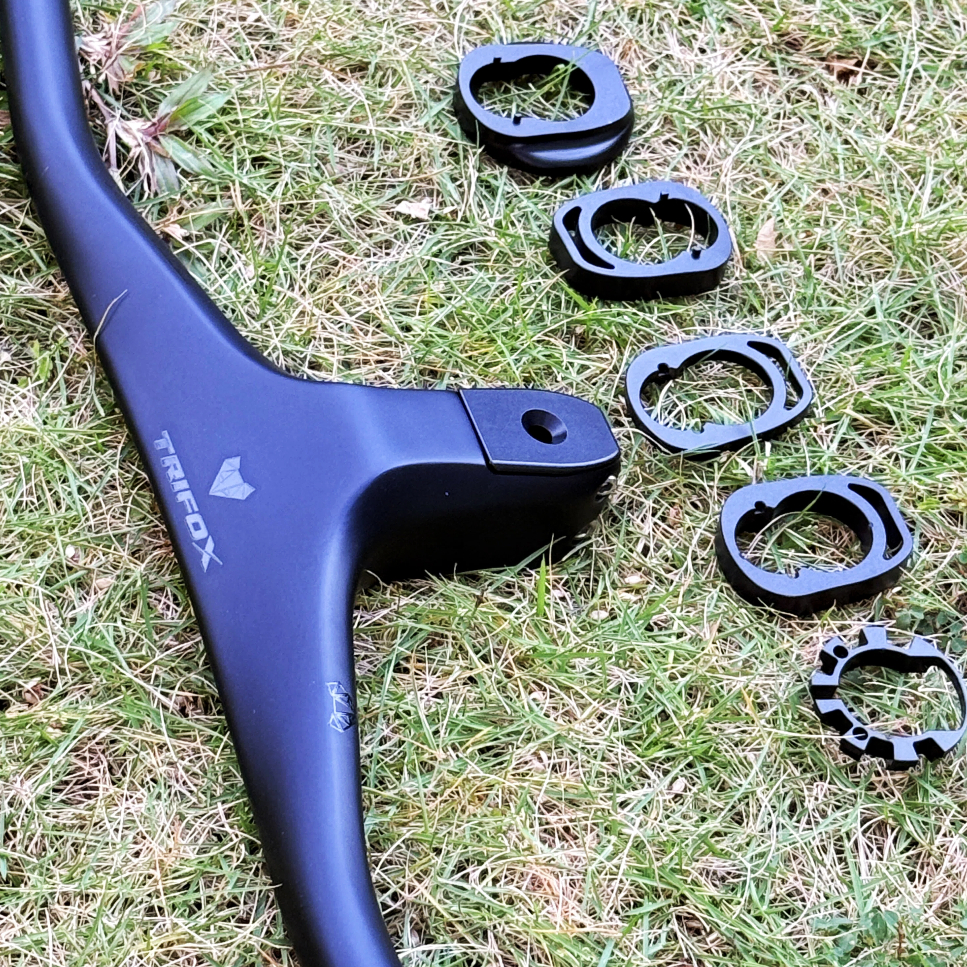
The Problem with Traditional Handlebars
Traditional mtb bike handle setups often involve multiple parts: the bar itself, a separate stem, and external cable routing. This not only adds weight but also creates a cluttered appearance vulnerable to cable snags and dirt accumulation. For riders seeking a sleek and functional solution, integrated bars present a compelling alternative.
Benefits of Integrated Carbon Design
1. Cleaner Aesthetics and Functionality
The Trifox RHB600 features full internal cable routing, eliminating exposed cables and housing. This streamlined design reduces the risk of snagging on trails and simplifies cleaning. Whether you're navigating dense forests or rocky descents, an integrated mtb cycle handlebar ensures your cockpit remains tidy and functional.
2. Significant Weight Reduction
Crafted from high-modulus carbon fiber, the RHB600 is exceptionally lightweight without sacrificing strength. By merging the stem and bar into a single unit, it removes redundant materials, making it an ideal upgrade for cross-country and trail riders focused on reducing overall bike weight.
3. Optimized Rise for Comfort and Control
As riser handlebars, the Trifox RHB600 provides a comfortable rise that improves body positioning for technical climbs and descents. This design reduces strain on your wrists and back, allowing for longer, more enjoyable rides.
4. Enhanced Stiffness and Responsiveness
Integrated bars like the RHB600 deliver superior stiffness compared to traditional two-piece setups. This translates to precise steering input and better power transfer, giving you confidence when tackling sharp corners or rough terrain.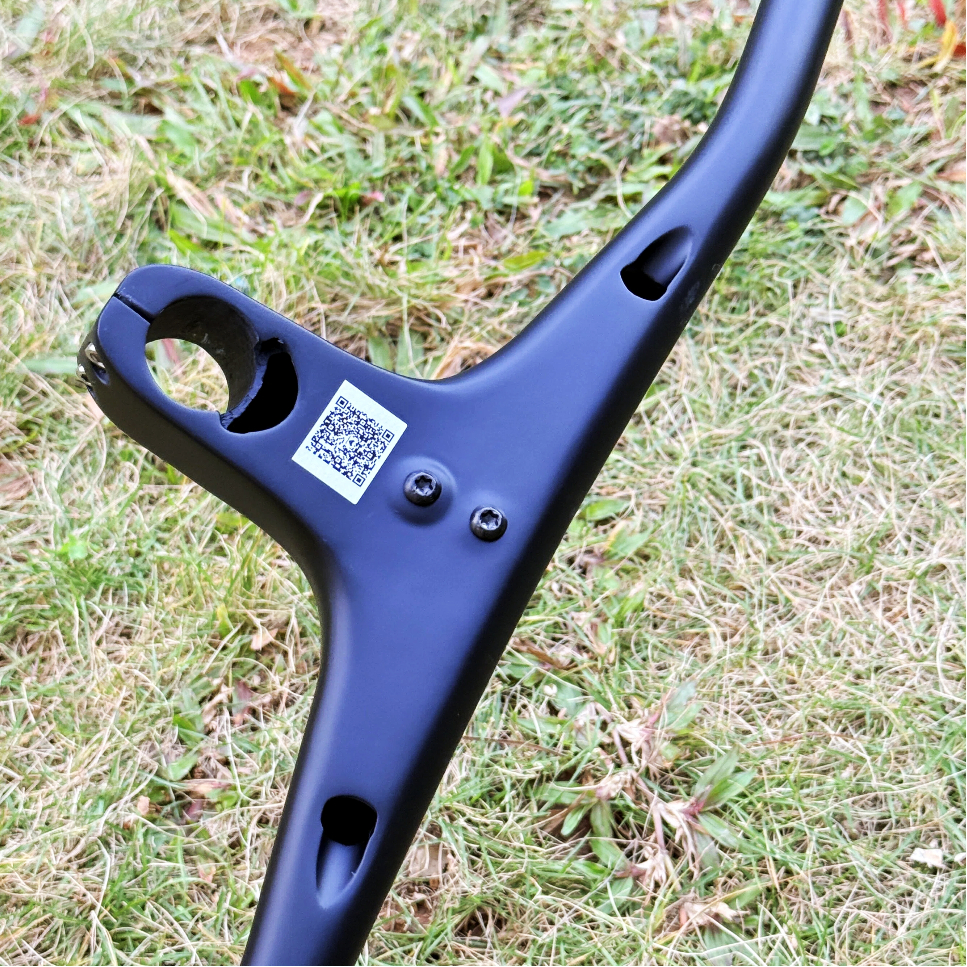
Why Choose the Trifox RHB600?
The Trifox RHB600 isn't just another mountain bike handlebar—it's a meticulously engineered component designed for modern trail demands. Its ergonomic shape, combined with a lightweight carbon construction, ensures durability and performance. The internal routing channels are compatible with dropper posts, shifters, and brake lines, making installation straightforward.
Riders who prioritize a minimalist yet high-performance cockpit will appreciate how this bar simplifies their bike's look while elevating its capabilities. Whether you're building a new bike or upgrading an existing one, the RHB600 offers a tangible improvement in both form and function.
Conclusion
Integrated carbon mountain bike bars represent the future of cockpit design, and the Trifox RHB600 stands out as a top contender in this category. By eliminating clutter, reducing weight, and improving handling, it addresses the core needs of today's riders. If you're ready to elevate your MTB's performance and aesthetics, it's time to consider making the switch to this innovative integrated carbon handlebar.
Upgrade to the Trifox RHB600 and experience the difference a well-designed integrated carbon handlebar can make on the trails.
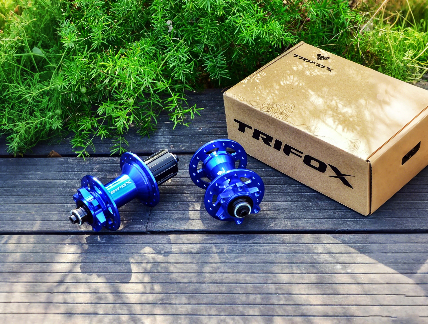
When it comes to mountain bike performance, the hub is one of the most critical yet often overlooked components. While riders frequently focus on upgrading frames or suspension, the humble hub plays a vital role in how your bike accelerates, maintains speed, and handles technical terrain. If you're experiencing any of these five issues, it might be time to consider the Trifox M827 Mountain Bike Hub for your next upgrade.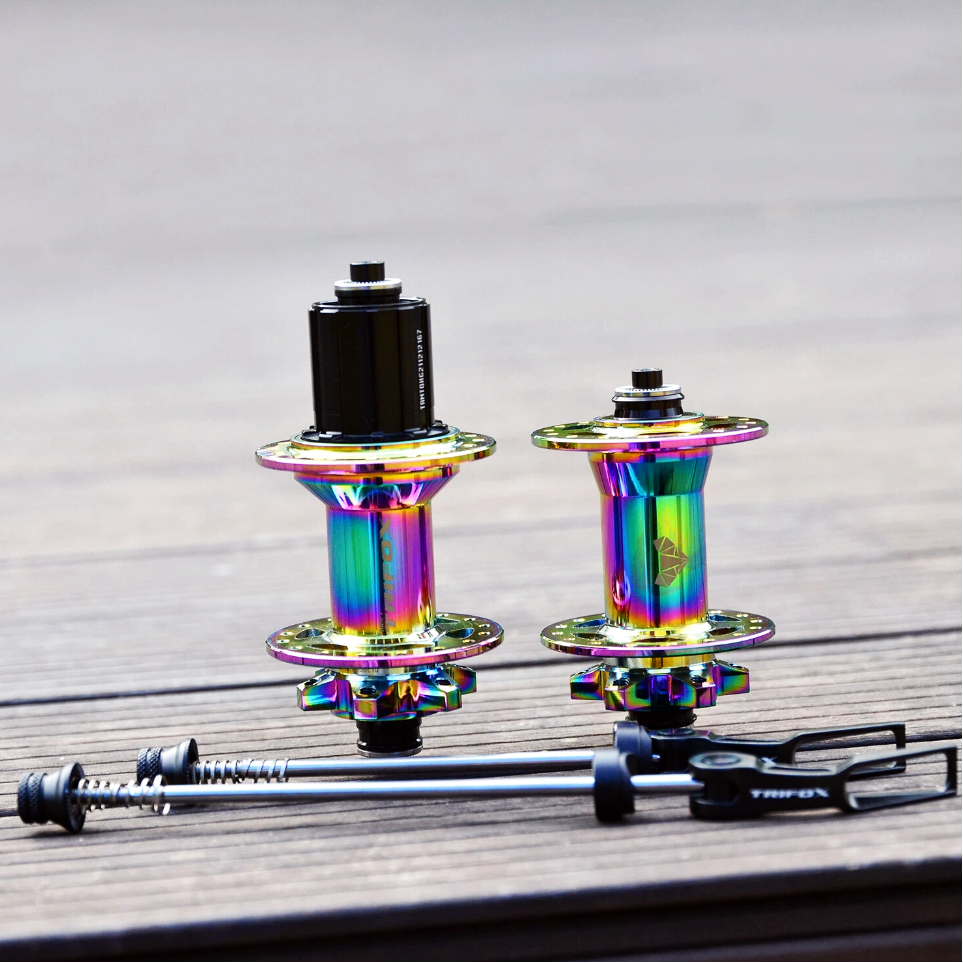
1. Poor Engagement and Power Loss
Modern mountain bike hubs feature high engagement points for instant power transfer. If you're experiencing noticeable delay between pedaling and drive response, or feeling like your power isn't translating immediately to forward motion, your hub's internal mechanism may be worn out. The Trifox M827 hub with its precise 54-tooth engagement system ensures immediate power transfer, making it ideal for technical climbs and sudden acceleration.
2. Unusual Noises During Riding
While some hub noise is normal, new or increasingly loud sounds often indicate problems. Grinding, crunching, or irregular clicking noises suggest that bearings may be contaminated or internal mechanisms are failing. The M827 MTB hub features sealed bearings and precision machining to provide smooth, quiet operation in all riding conditions.
3. Visible Play or Wobble in the Wheel
If you can feel or see side-to-side movement in your wheel when it's securely mounted, this indicates hub bearing wear. This play affects riding stability and can lead to unsafe handling. The Trifox bike hub is engineered with superior bearing seals and precise tolerances to eliminate play while maintaining smooth rotation.
4. Rough Rotation and Increased Drag
A properly functioning hub should allow the wheel to spin freely with minimal resistance. If your wheel stops spinning quickly or feels rough when rotating, the bearings may be damaged. This friction creates drag that slows you down. The M827 mountain bike hub features low-friction seals and high-quality bearings to maintain smooth spinning and reduce rotational drag.
5. Frequent Maintenance Requirements
High-quality hubs are designed to require minimal maintenance. If you find yourself constantly adjusting or repairing your current hub, it's likely reaching the end of its service life. The Trifox M827 is built for durability with minimal maintenance requirements, saving you time and frustration while providing reliable performance ride after ride.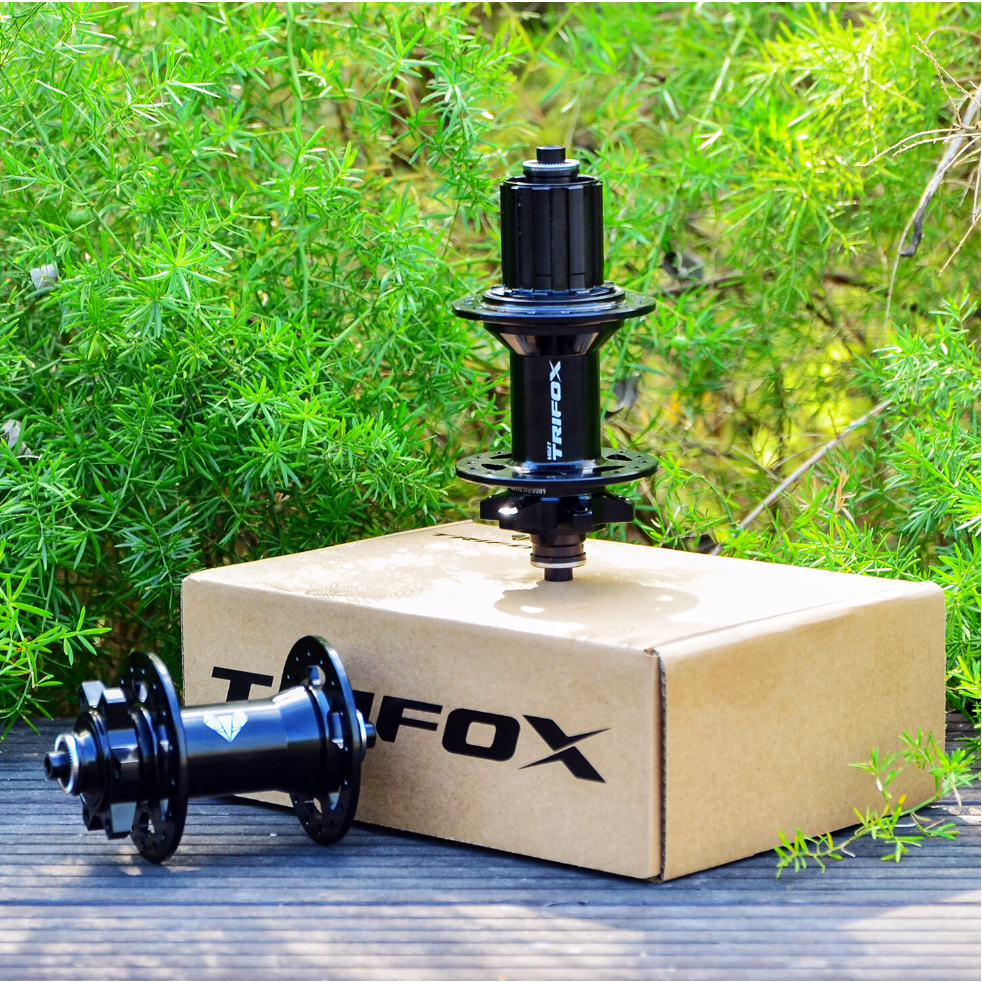
Why Choose Trifox M827 Hub?
The Trifox M827 Mountain Bike Hub represents the perfect balance of performance, reliability, and value. With its 54-tooth rapid engagement mechanism, sealed bearing system, and lightweight construction, it delivers professional-level performance for serious riders. Whether you're tackling technical cross-country trails or aggressive all-mountain routes, this hub provides the instant engagement and reliable performance you need.
Compatible with most modern mountain bike standards and available in multiple axle configurations, the M827 makes an excellent upgrade for riders looking to improve their bike's performance without breaking the bank. The hub's durable construction ensures it can handle the demands of aggressive trail riding while maintaining smooth operation.
Don't let an aging hub limit your riding potential. Recognizing these five signs early will help you maintain optimal performance and get the most from your mountain bike. Upgrading to the Trifox M827 Mountain Bike Hub is one of the most cost-effective ways to transform your bike's responsiveness and reliability. Experience the difference that quality engineering makes in your next ride.
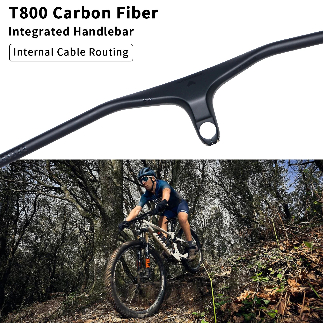
Let's be honest. Are you tired of looking down at your mountain bike bars only to see a tangled nest of shift and brake cables? Not only does it look messy, but those exposed cables can snag on branches, collect grime, and create annoying cable rub on your precious head tube.
What if there was a solution? What if you could achieve a sleek, minimalist front end that looks like it belongs on a concept bike? Enter the Trifox RHB600 Ultra-Light Integrated Full Inner Mountain Bike Handlebar. This one-piece carbon fiber handlebar promises the clean look we crave. But is it the real deal? Let's dive in.
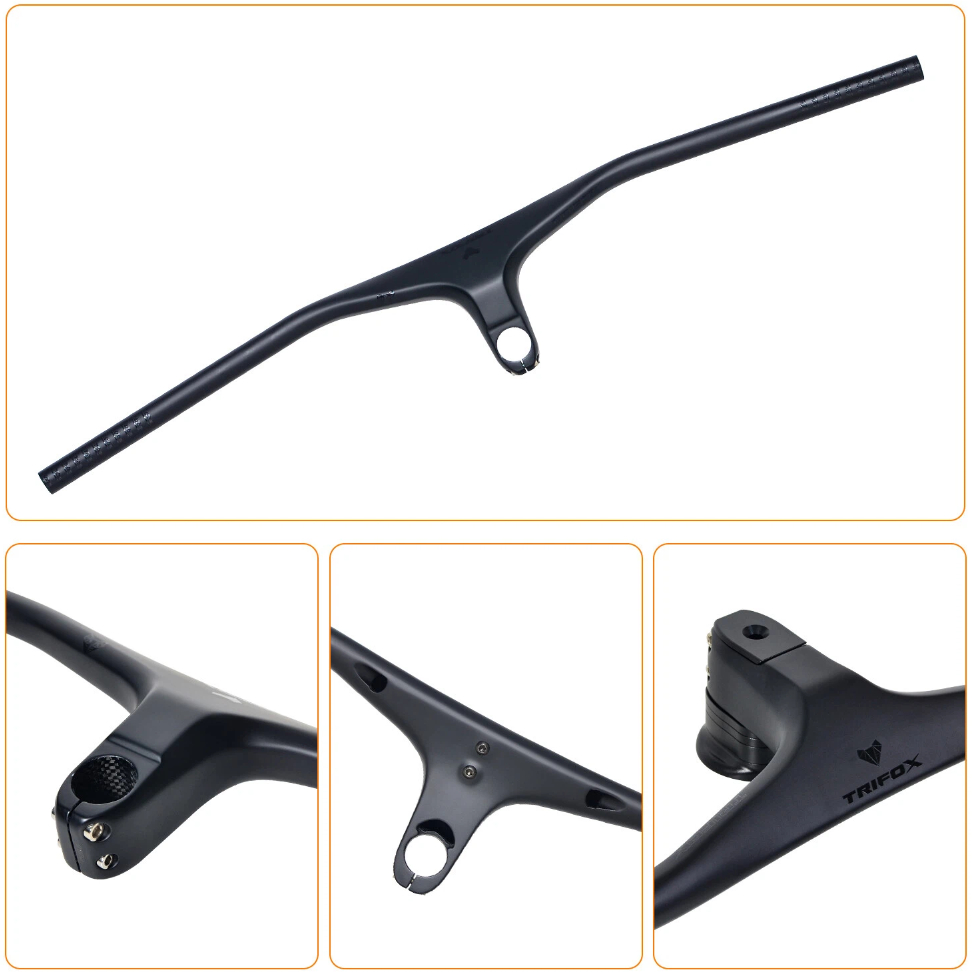
What Are Integrated Carbon Handlebars?
Traditional mountain bike handlebars are a two-piece system: a bar and a separate stem. Cables are typically routed externally, or at best, enter the frame but still loop around the head tube.
An integrated handlebar, like the Trifox RHB600, changes everything. It's a single, unified component crafted from carbon fiber, where the bar and stem are one. Its defining feature is full internal routing—channels are molded directly into the structure, allowing brake hoses and shift cables to run completely through the bar and stem, disappearing from view entirely.
Are These the Cleanest Mountain Bike Bars? Analyzing the Trifox RHB600
So, does the Trifox RHB600 live up to its promise of a pristine cockpit? The evidence points to a resounding yes.
1. The "Wow" Factor of a Clean Cockpit: The most immediate benefit is the stunning visual upgrade. With all cables seamlessly routed inside the integrated carbon bar, the front of your bike looks fast, modern, and professional. It’s a level of clean that is simply impossible to achieve with traditional components.
2. Aerodynamics (Yes, on a MTB!): While not the primary goal on the trail, reducing cable clutter marginally improves airflow. Every little bit counts when you're chasing speed.
3. Protected Cables: By tucking them away inside the bar, you shield your crucial brake and shift lines from the elements—mud, dust, and moisture—which can contribute to longer component life and more consistent performance.
4. Ultra-Lightweight: Made from high-modulus carbon fiber, the RHB600 is engineered to be exceptionally light. Reducing weight at the cockpit, the most manipulated part of the bike, enhances handling agility and makes the bike feel more responsive.
5.The Installation Consideration: It's important to be upfront. Installing a full inner routing handlebar is more complex than a traditional bar. It requires patience and the right tools, like a hydraulic hose kit for brakes. For many, the unparalleled clean look is well worth the extra effort during the initial build or professional installation.
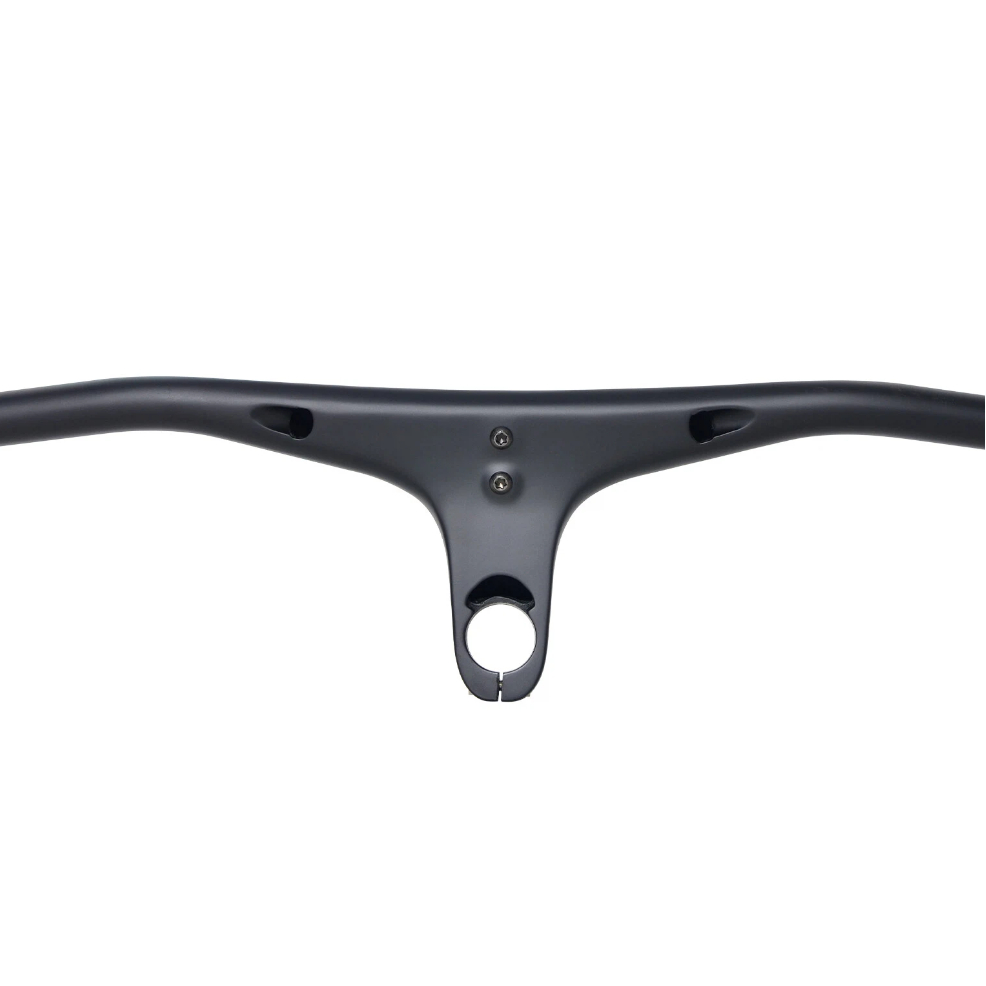
Who Is This Ultimate Clean Cockpit For?
The Trifox RHB600 is the perfect upgrade for:
The Weight-Weenie: Seeking every gram savings without sacrificing strength.
The Aesthetic Perfectionist: Who believes a clean bike is a fast bike and takes pride in a flawless build.
The Tech-Savvy Trail Rider: Who appreciates modern engineering and the functional benefits of protected cables.
The Upgrader: Looking for a single component that will dramatically transform the look and feel of their modern mountain bike.
The Verdict on Cleanliness
So, back to our original question: Are These the Cleanest Mountain Bike Bars?
If your definition of "clean" is a cockpit completely free of visual cable clutter, then the answer is a definitive yes. The Trifox RHB600 achieves a level of minimalist perfection that sets a new standard. It combines the weight savings and stiffness of carbon fiber with the sleek, professional finish of full internal routing.
While it demands a more meticulous installation, the payoff is a breathtakingly clean front end that enhances aesthetics, offers subtle performance benefits, and gives you the pride of owning a bike that looks as high-performance as it rides.
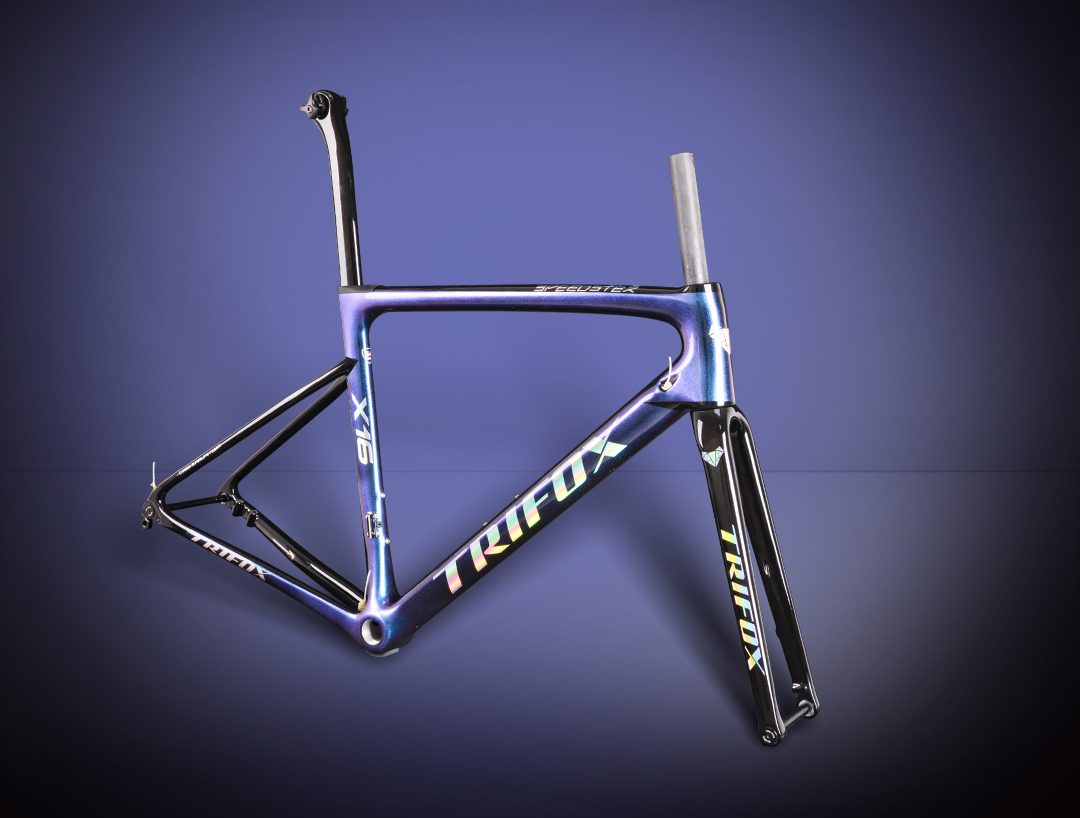
What makes a road bike frame truly popular? It's not just hype – it's the perfect blend of performance, value, and real-world usability. Trifox's X16 Disc Brake Carbon Frame consistently tops their charts, and for good reason. Let's dive into what makes this frame a standout choice for discerning riders:
Uncompromising Lightweight Performance: Crafted from high-modulus T800 carbon fiber, the X16 boasts an impressive frame weight hovering around 900g (size dependent). This translates directly to snappier acceleration, effortless climbing, and a lively, responsive ride that feels eager under power. It's pure road buzz without the penalty.
Disc Brake Dominance: Embracing the modern standard, the X16 features flat-mount disc brake compatibility. This means superior stopping power in all conditions – wet descents, tight corners, or emergency stops – offering consistent modulation and control that rim brakes simply can't match. Confidence is key to speed.
Stiffness Meets Comfort: Trifox engineers didn't just chase grams. The X16 features a stiff front triangle (head tube, down tube, bottom bracket) for razor-sharp handling and efficient power transfer when you stomp on the pedals. Yet, the carefully shaped thin seatstays and fork provide crucial vertical compliance, absorbing road buzz and reducing fatigue on longer rides. You get race-ready feedback without the harshness.
Modern, Versatile Geometry: The X16 strikes a brilliant balance. Its geometry leans towards aggressive (think shorter headtubes, longer reaches) for efficient power output and aerodynamic potential, yet remains accessible enough for spirited club rides and gran fondos. It’s a frame built for speed that doesn’t demand a pro-level contortion.
Smart, Rider-Focused Design:
Threaded Bottom Bracket (BB86): A massive win for reliability and home mechanics. No press-fit creaks here! Easy installation and long-term peace of mind.
Full Internal Cable Routing: Creates a sleek, aerodynamic profile while protecting cables and hoses from the elements. Looks pro, functions flawlessly.
Wide Compatibility: Accommodates electronic and mechanical groupsets, 28c+ tires (great for comfort/rough roads), and standard 27.2mm seatposts for tuning ride feel.
Why the X16 Resonates:
It delivers pro-level pedigree (lightweight carbon, advanced shaping, disc performance) at a direct-to-consumer price that makes high-performance cycling genuinely accessible. You're not paying for flashy marketing or dealer markups – just exceptional engineering focused on the ride.
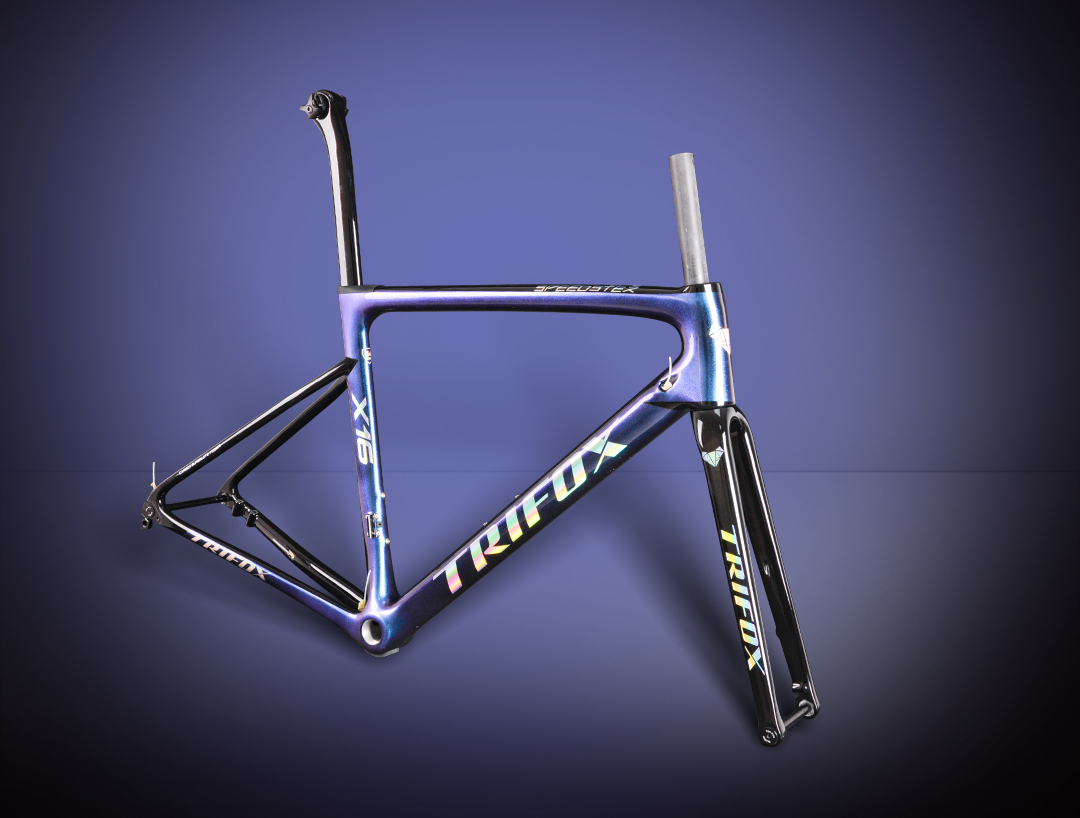
The Trifox X16 isn't just popular; it's popular for a reason. It masterfully combines the essential ingredients modern road riders crave: lightweight carbon efficiency, the confidence of disc brakes, a balanced blend of stiffness and comfort, and practical, reliable design – all wrapped up in a package offering outstanding value. If you're seeking a frame that punches far above its weight class and forms the foundation of a truly exciting road machine, the X16 is Trifox's testament to smart performance.
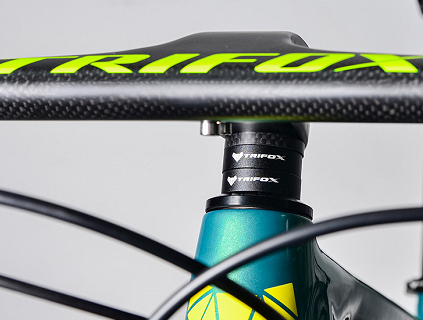
Don't underestimate those humble rings stacked on your steerer tube! Stem spacers are silent heroes in dialing your bike's feel. Positioned above or below your stem, they fine-tune your cockpit’s height – impacting comfort, control, and speed. Here's how:
1. Fit & Comfort:
Spacers directly influence your stack height – the vertical distance from the bottom bracket to the stem. More spacers (or spacers below the stem) create a taller, more upright riding position. This:
Reduces strain on your back, neck, and wrists.
Improves comfort on long climbs or endurance rides.
Opens your chest for better breathing.
Fewer spacers (or spacers moved above the stem) lowers your front end for a more aggressive, aerodynamic posture – ideal for racing or maximizing power transfer.
2. Handling & Stability:
Raising your stem with spacers shifts your weight slightly rearward. This:
Makes steering feel slightly slower and more stable, especially at high speeds or on steep descents.
Increases front-wheel traction for confident cornering.
Lowering the stem shifts weight forward:
Quickens steering response for technical, twisty trails.
3. The Sweet Spot:
Finding your ideal spacer setup balances comfort and control:
XC/Endurance Riders: Often prefer more spacers for comfort during long efforts.
Trail/Downhill Riders: May run fewer spacers (or a slammed stem) for aggressive handling and weight distribution on descents.
Experiment Wisely: Adjust in 5-10mm increments. Never exceed your fork's steerer tube limit! Always leave a 3-5mm spacer above the stem for proper headset preload.
Pro Tip: Use durable, lightweight alloy spacers like Trifox's Precision Spacers. They maintain secure clamping force, resist corrosion, and keep your cockpit clean during adjustments.
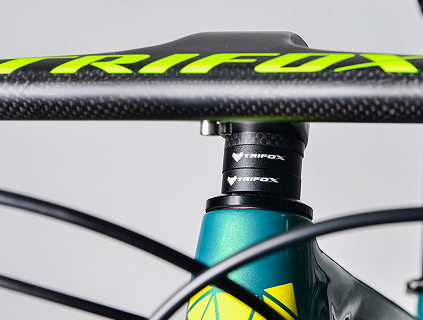
The Takeaway:
Stem spacers are free performance tuning! Dialing your stack height optimizes your body's interaction with the bike. A minor tweak can reduce fatigue, boost confidence, and transform your ride. Don't just set it and forget it – experiment safely to find your perfect balance.
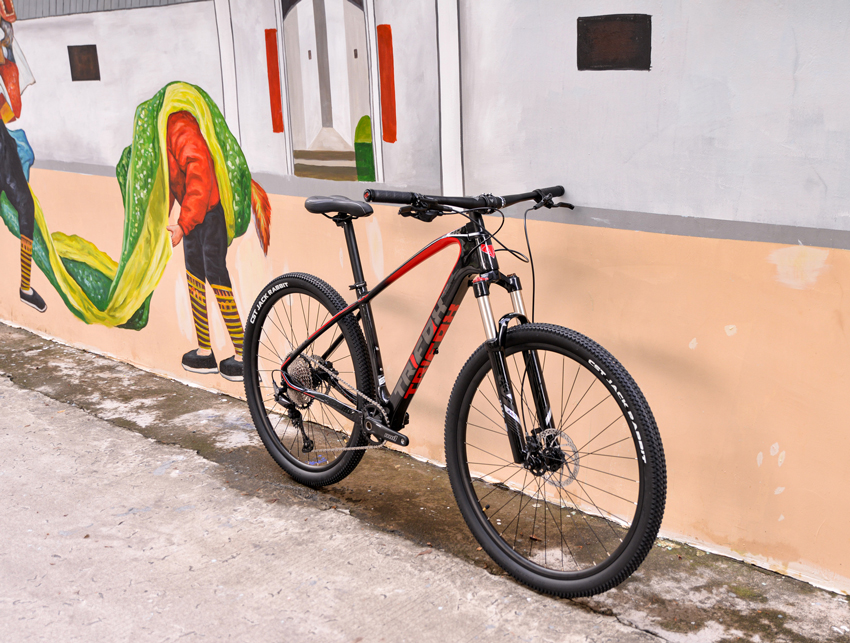
Saddle soreness, numb bits, or aching backs can ruin the joy of cycling. The good news? Discomfort isn't inevitable! Achieving a pain-free ride hinges on proper bike fit, smart positioning, and choosing the right gear. Here’s your guide to sitting comfortably:
1. Find Your Foundation: Saddle Height is Key
Heel Method: Sit on the saddle. Place your heel on the pedal at its lowest point. Your leg should be almost straight (slight bend). When pedaling with the ball of your foot, you’ll have a 25-35 degree knee bend.
Why it works: Too low strains knees; too high causes rocking hips and saddle pressure. Correct height ensures efficient power transfer and stability.
2. Dial in Fore/Aft Position (Saddle Setback):
Your knee should align vertically over the pedal spindle when the crank is horizontal (3 o'clock position). Use a plumb line or have someone check.
Why it matters: Incorrect setback overloads hands, shoulders, or perineum, causing pain.
3. Level Your Saddle (Usually!):
Start with the saddle perfectly level. Use a spirit level app on your phone. Minor adjustments (1-2 degrees nose down or up) can help, but drastic angles often create new problems.
Avoid: Tipping the nose up significantly increases perineal pressure. Tipping it down slides you forward, straining arms and shoulders.
4. Engage Your Sit Bones (Ischial Tuberosities):
Sit upright on the saddle’s widest rear section. You should feel your weight firmly on these two bony points – not on soft tissue.
Tip: Wear padded cycling shorts ("chamois") to cushion these bones. Regular underwear causes friction and chafing.
5. Maintain a Neutral Spine & Relaxed Upper Body:
Avoid rounding or over-arching your lower back. Engage your core slightly.
Keep elbows slightly bent, shoulders relaxed and down (not hunched near ears). A stiff upper body transmits shock and causes neck/shoulder pain.
6. Stand Up Regularly!
Shift your weight, pedal out of the saddle for 10-30 seconds every 10-15 minutes. This relieves pressure and boosts circulation, preventing numbness.
7. Invest in the Right Saddle:
Measure Your Sit Bones: Use cardboard or a memory foam pad to find your sit bone width. Choose a saddle at least 20mm wider than this measurement.
Shape Matters: Consider cutouts/relief channels if you experience soft tissue pressure or numbness. Test saddles if possible.
8. Consider Suspension & Dampening:
A carbon seatpost, suspension seatpost, or wider tires run at lower pressure can significantly reduce road/trail vibration transmitted to your body.
Listen to Your Body & Adjust Gradually:
Minor tweaks (1-2mm saddle height, slight tilt) make a big difference. Change one thing at a time and test ride.
Some initial discomfort adapting to a correct position is normal, but sharp pain or numbness means STOP and re-evaluate.
The Takeaway:
Comfort comes from aligning your body correctly on a bike suited to you. Prioritize saddle height, setback, and level. Support your sit bones, stay relaxed, move often, and don’t suffer silently – the right setup feels amazing! If pain persists, consult a professional bike fitter. Ride happy, ride pain-free!
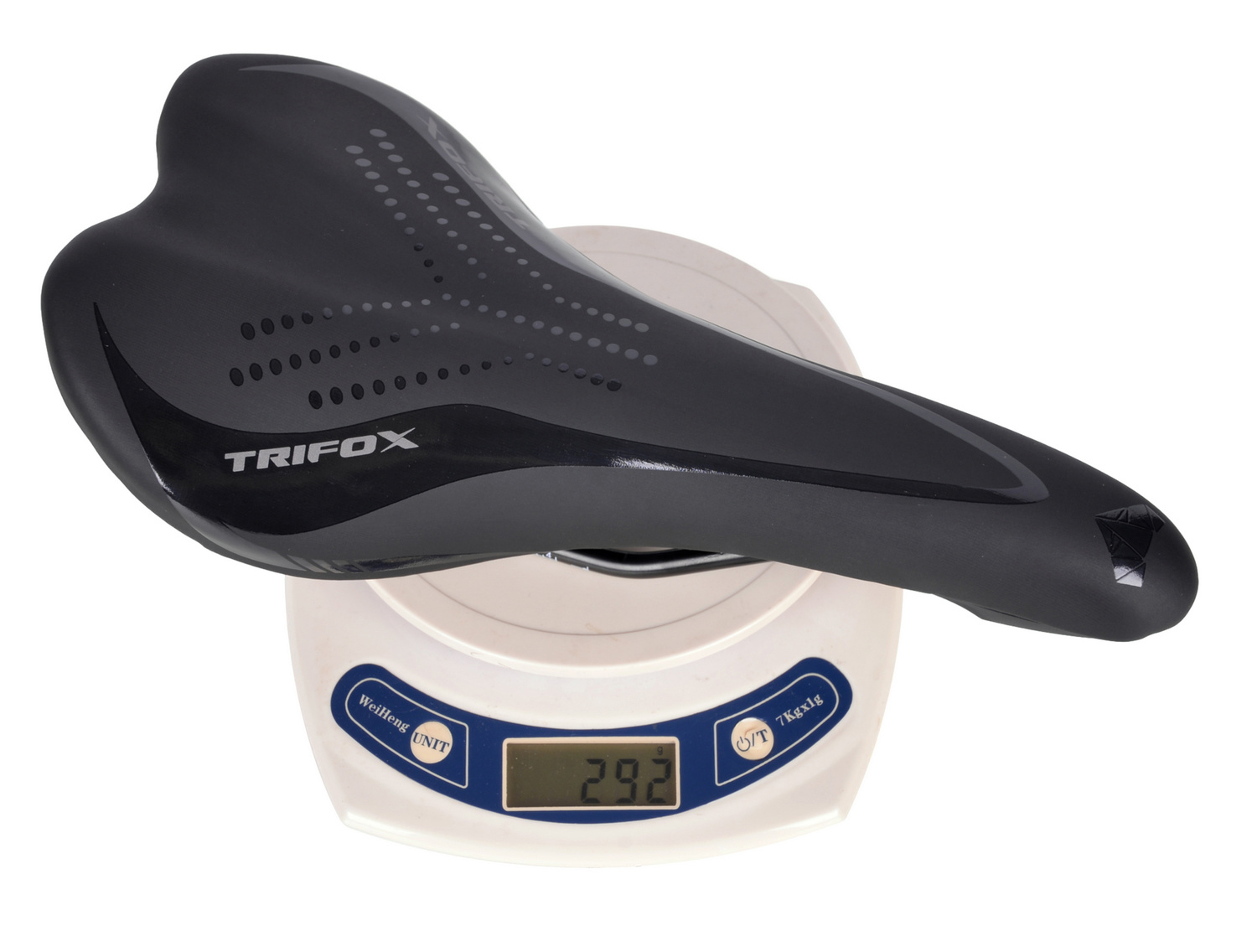
Searching for the "most comfortable" mountain bike saddle is like asking for the best shoe size – there's no single answer. Comfort is deeply personal, depending on your anatomy, riding style, and bike fit.
Why Comfort is Subjective:
1. Sit Bone Width: This is CRITICAL. Your sit bones need proper support. Saddles too narrow or too wide cause pain. Get measured at a shop or use the cardboard-at-home method.
2. Riding Style & Terrain: Aggressive downhillers need different support than long-distance XC riders. More technical terrain often benefits from a shorter nose.
3. Flexibility & Position: Your hip angle and how much you move on the bike influence pressure points.
4. Individual Sensitivity: Some riders need generous padding, others find minimalism better.
Key Features for MTB Comfort:
- Correct Width: Matches your sit bone measurement (usually 2-4cm wider).
- Appropriate Padding: Enough to dampen vibrations but not so much it causes chafing or restricts movement. Too much padding can compress nerves.
- Central Cutout/Relief Channel: Essential for most riders! Reduces soft tissue pressure and numbness on longer rides.
- Shell Flex: A slightly flexible shell absorbs trail buzz better than a completely rigid one.
- Shape: Flat profiles suit aggressive positions; more curved profiles can offer support for upright riding. Short noses improve maneuverability.
Where Do Carbon Saddles Fit In? (Like Trifox Bike's Range)
Carbon saddles (like those offered by Trifox Bike at trifoxbike.com/carbon-bike-saddles) excel in specific areas relevant to MTB comfort:
1. Targeted Flex: High-quality carbon shells can be engineered to flex strategically under your sit bones, absorbing impacts and vibrations from rough trails, while remaining supportive and efficient.
2. Lightweight & Efficient: Significant weight savings over traditional saddles, beneficial for climbing and overall bike feel.
3. Durability: Carbon is highly resistant to wear and tear from crashes and the elements.
4. Minimalist Design: Many carbon saddles feature smart padding placement (often just in the rear zone) combined with relief channels, hitting the sweet spot for riders who find bulky saddles uncomfortable.
Is Carbon Right for You?
Carbon saddles can be incredibly comfortable, especially if you value vibration damping, weight savings, and a direct connection to the bike. However, they often have less overall padding than heavily cushioned models. Riders preferring a very plush feel might initially find them firmer, though the flex often compensates brilliantly for trail chatter.
The Verdict & How to Find YOUR Most Comfortable Saddle:
1. Measure Your Sit Bones.
2. Prioritize a Relief Channel/Cutout.
3. Consider Your Riding Style: Aggressive? Look shorter/narrower. Enduro/Trail? Balance is key. XC? Efficiency and weight matter.
4. Consider Carbon (Like Trifox): If you value precise flex, vibration damping, low weight, and durability, explore quality carbon options.

























































